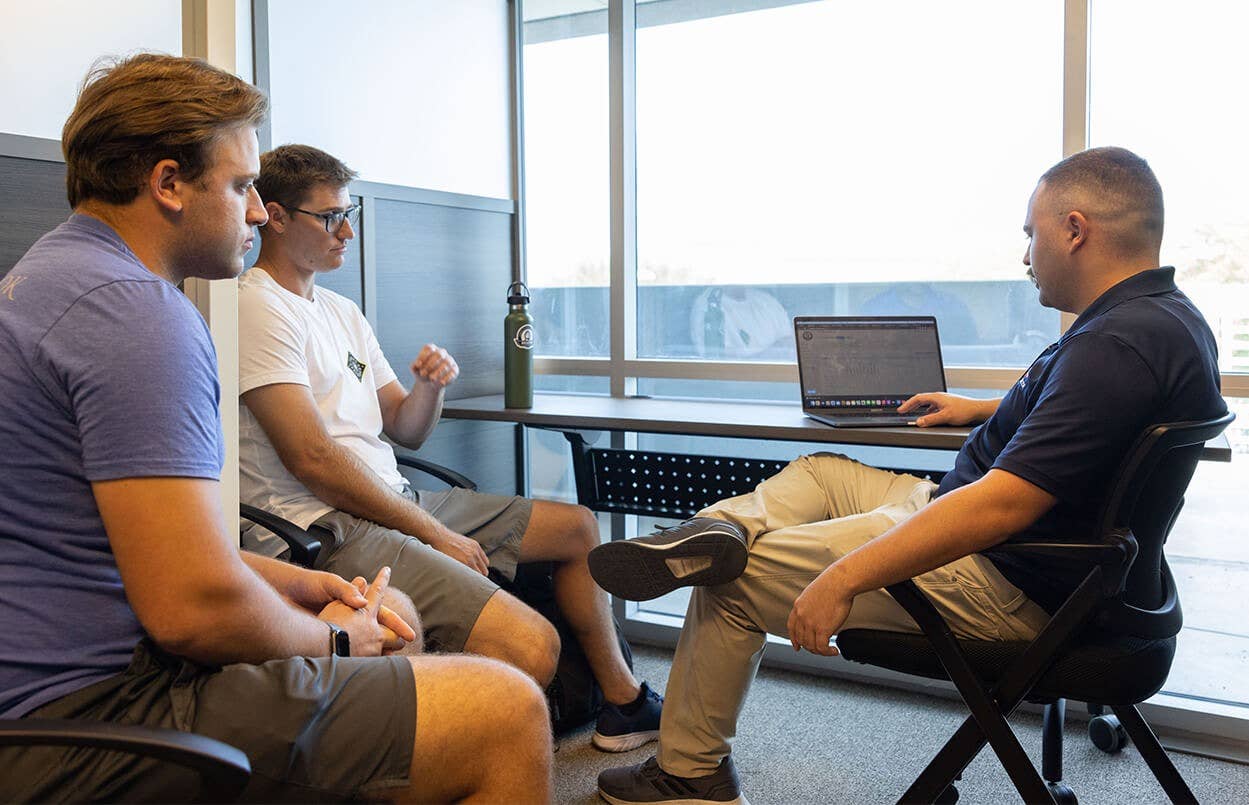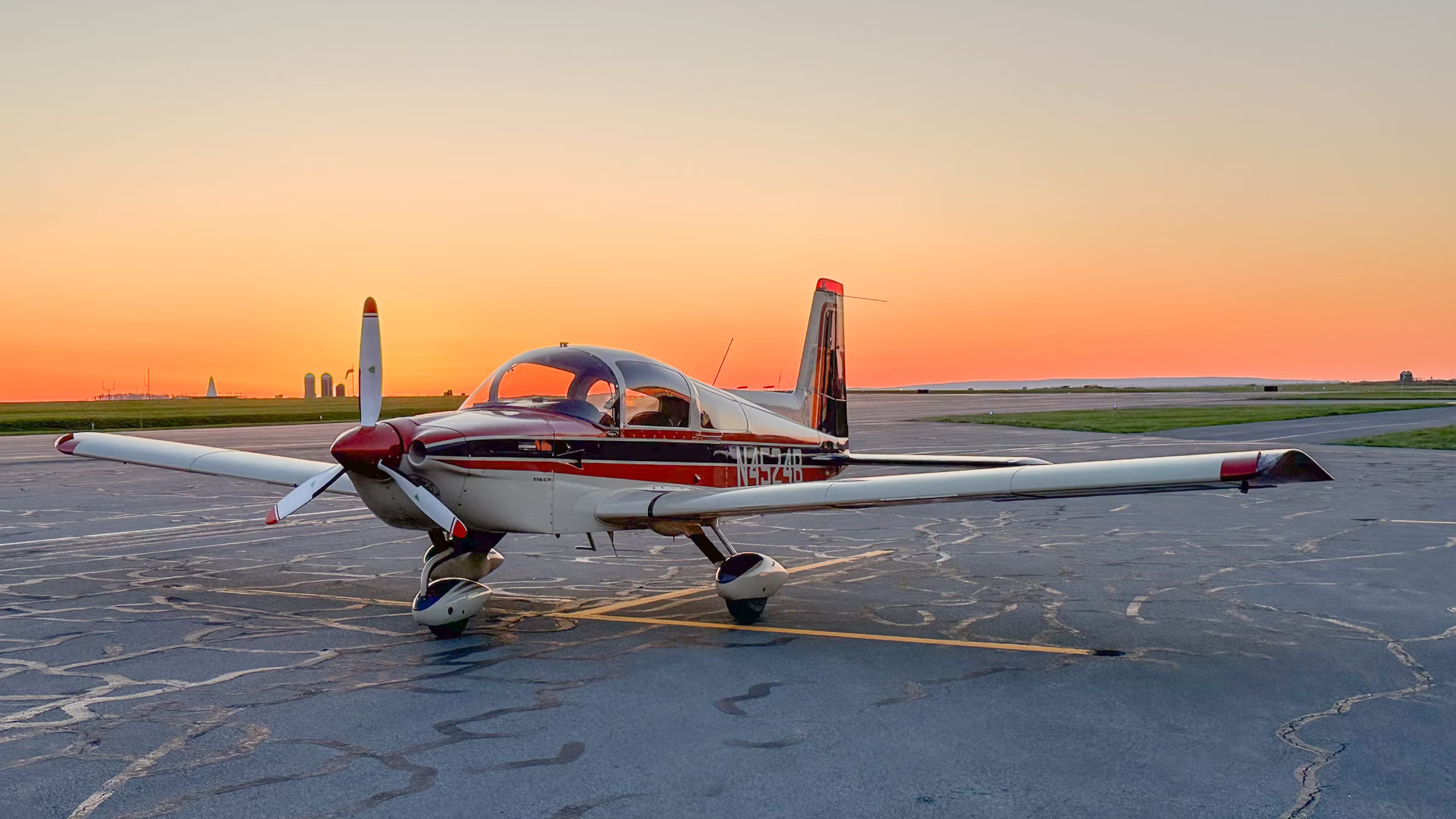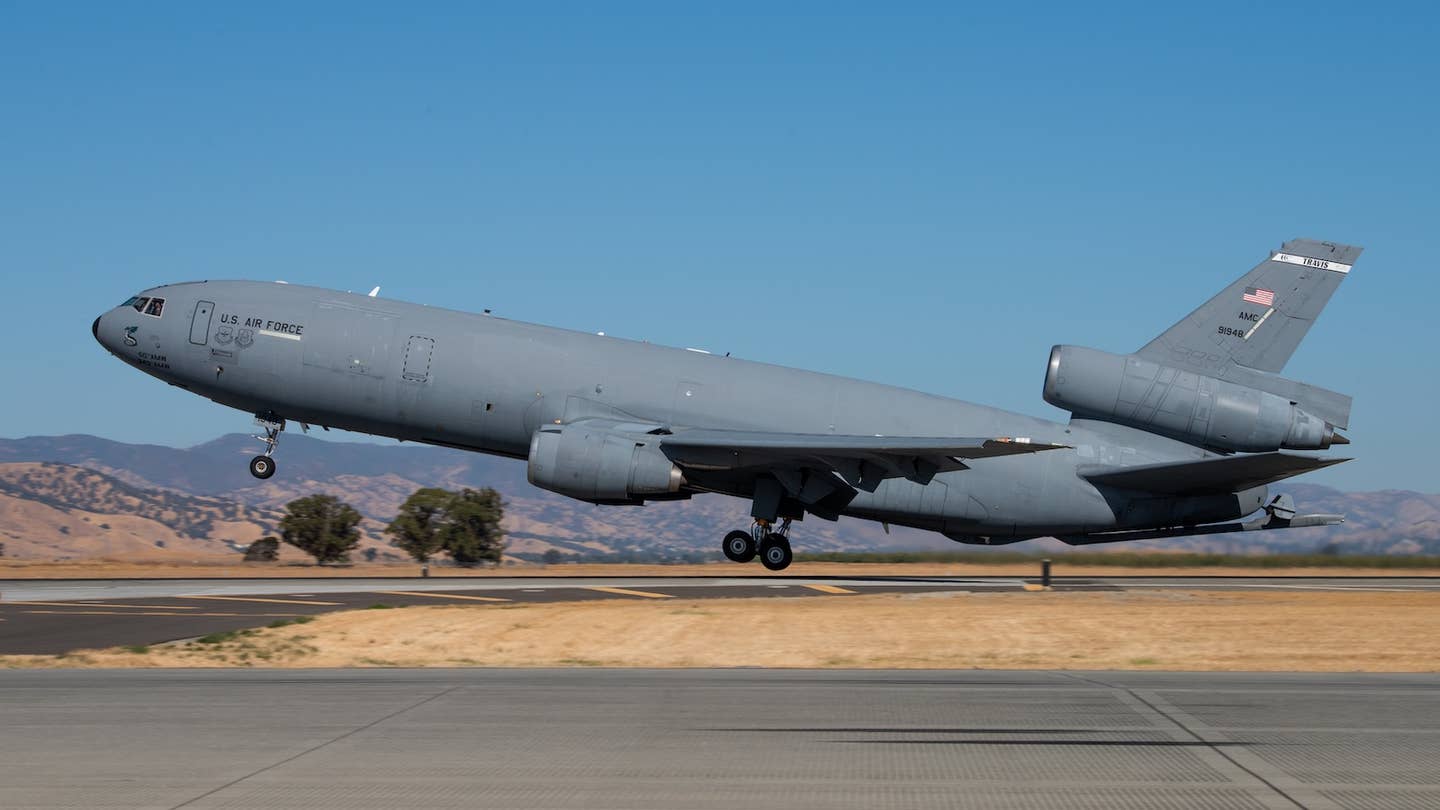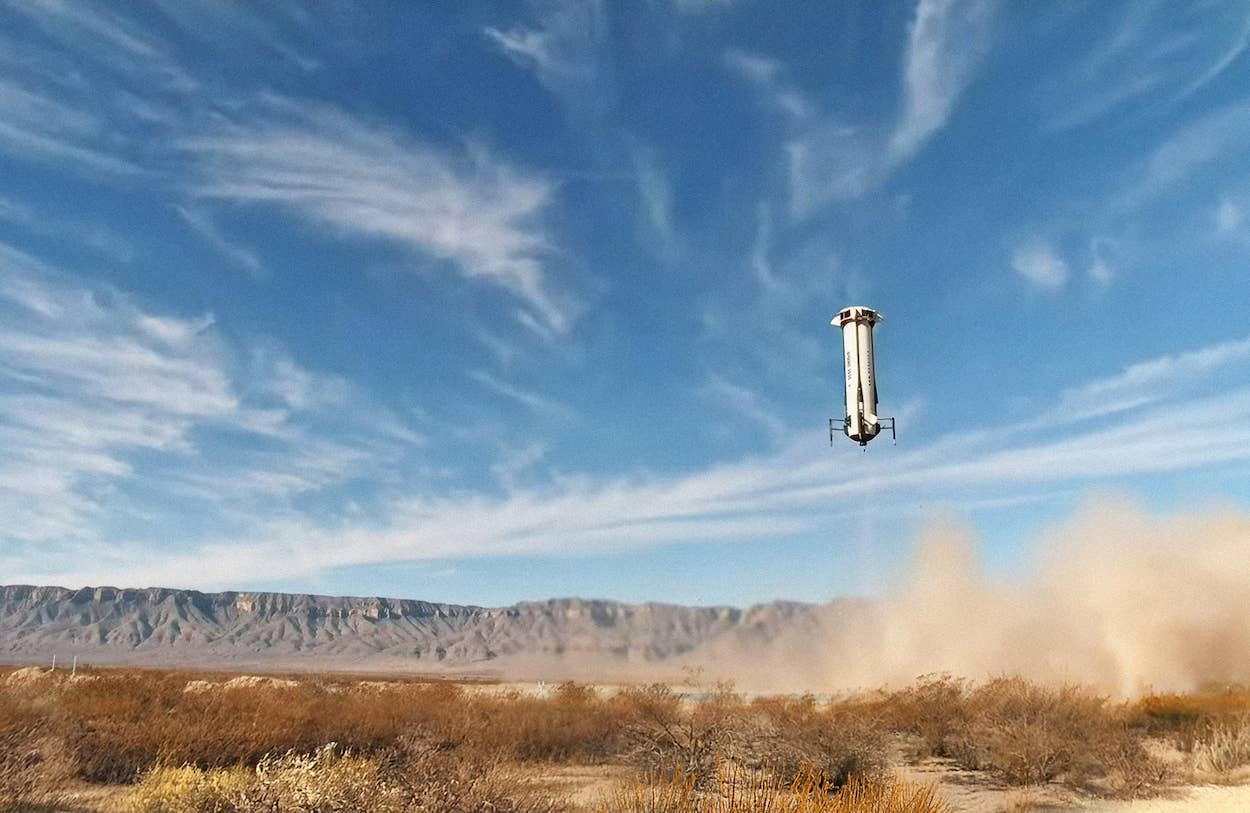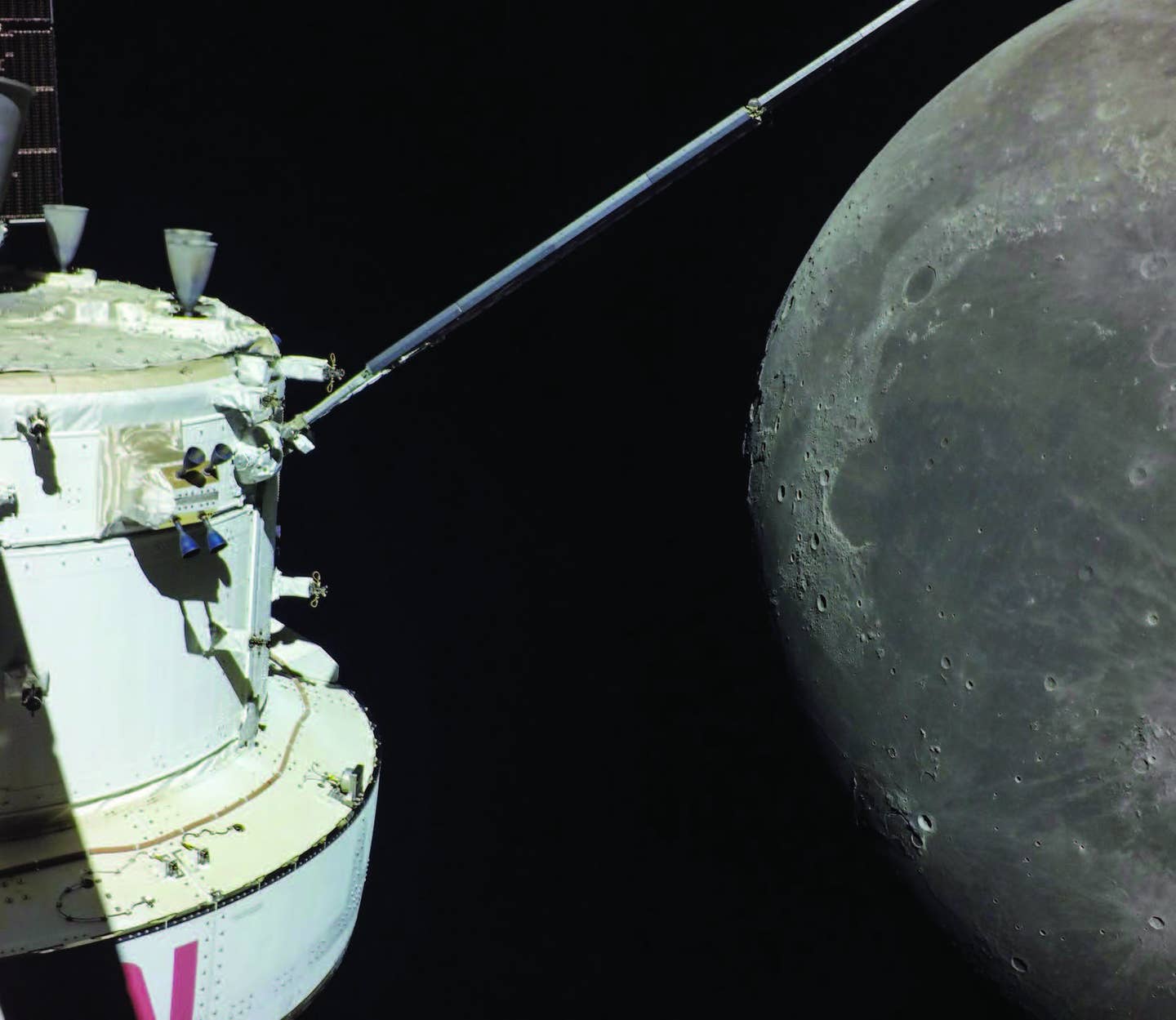Making 3 Flights in 3 Days at Sun ’n Fun
A pilot shares their experiences with the Carbon Cub UL, Titan Aerobatic Team T-6, and S-211 Marchetti jet at the annual aerospace expo.
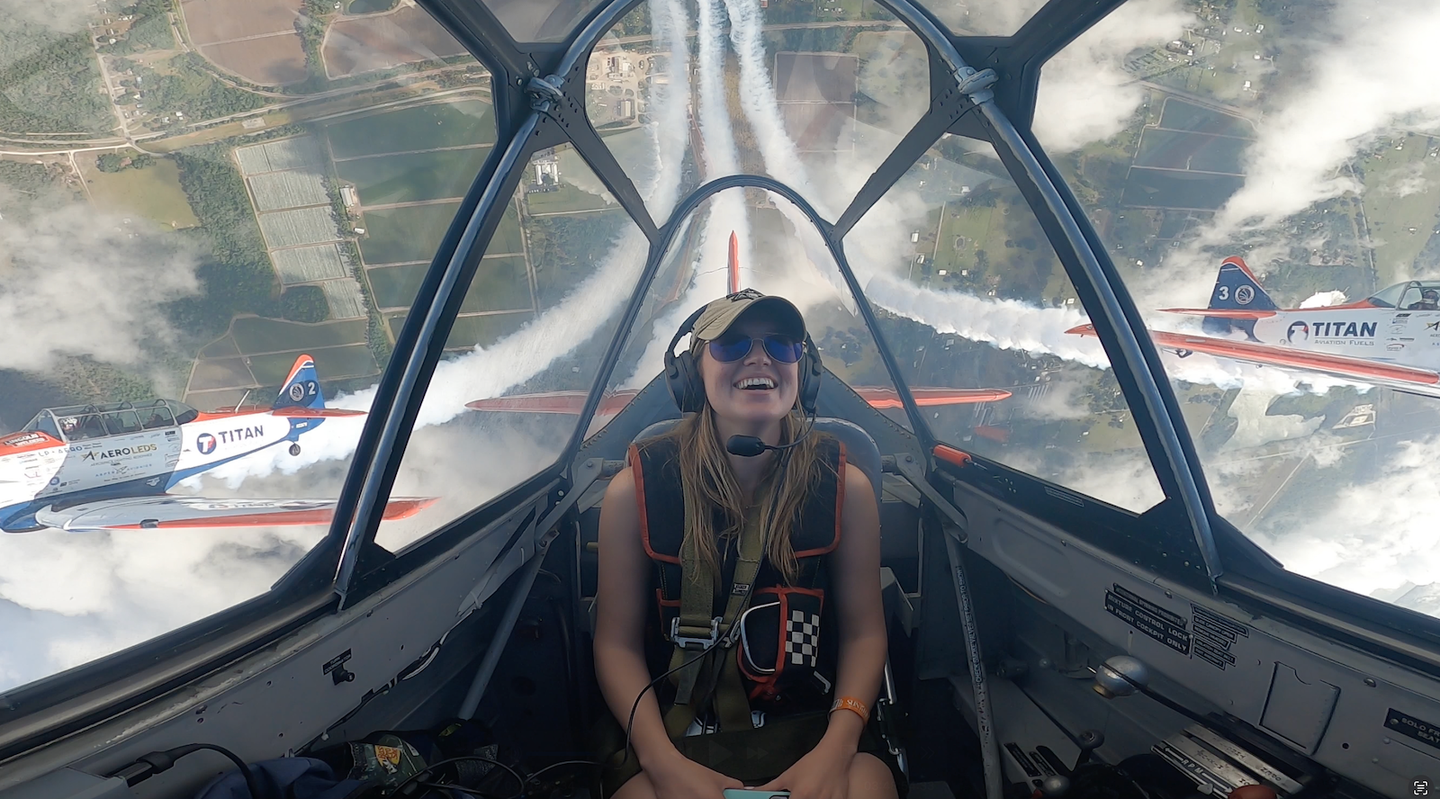
Cayla McLeod flies with the TITAN Aerobatic Team during Sun ‘n Fun. [Courtesy: Cayla McLeod]
If you’re familiar with the Sun ’n Fun Aerospace Expo in Lakeland, Florida, you’ll know that this isn’t a show where the manufacturers, exhibitors, and/or alphabet organizations tend to roll out their latest and greatest, so this article won’t be focusing on any newsworthy-specific items.
However, what it will be focusing on is three vastly different flight experiences that I had the pleasure of taking part in throughout the week. A story about FLYING, if you will.
At the start of the week, I was invited by my friends at CubCrafters to fly the Carbon Cub UL sporting the new three-bladed Hartzel Kestrel propeller at the South Lakeland Airport (X49), a grass strip just south of the Sun ’n Fun grounds. It is here where CubCrafters offers demo flights to customers and prospective buyers. Although the UL debuted prior to Sun ’n Fun two years ago, I had yet to try this aircraft on for size. Powered by a Rotax 916 engine producing 160 hp, I was a bit hesitant to think I would be impressed with this machine, especially since I was used to flying the EX-2s, FX-2s, and FX-3s at 180 and 186 hp, respectively. But boy, was I in for a treat.
Although CubCrafters vice president Brad Damm offered up a cockpit checkout to let me take it for a solo spin, my Rotax experience is next to none, so I was thankful that Chuck Kinberger of Southern Cubs offered to climb in the back seat. After Kinberger walked me through the vastly different Rotax starting procedure, I announced “clear prop,” and the UL hummed to life. It sounded incredibly quiet compared to the boisterous Titan engines I was used to—however, I kind of liked it.
“Alright, remember you don’t need to do a run-up when we get down to the end,” said Kinberger as I made my way down the taxiway. Admittedly, in our limited time together, I wasn’t able to sit down with Kinberger after the flight to truly understand the intricacies of the Rotax engine, but I do know another check was not necessary prior to takeoff due to the dual ECU nature of this engine—the Rotax system self-checks and will show a warning light if anything is wrong.
After a control check, I added a notch of flaps and announced our departure. I was immediately surprised by the powerful response from the 916, but it wasn’t until I pushed the power all the way in that I really felt an afterburner of sorts kick in. “Woah!” I exclaimed. As I climbed out at what felt like a comfortable attitude, Kinberger pulled back on the stick even farther to truly demonstrate what the UL could do. As I was launched back in my seat, staring almost straight up at the sky, Kinberger said, “It will basically go vertical.” I can surely attest to that.
The flying characteristics of the UL are incredibly similar to those of the UL’s older sibling, the Carbon Cub SS. With slightly heavier ailerons than I would prefer, it took a few moments to remember I was not in an FX. But, the good news is this UL will soon be outfitted with EX and FX ailerons. Although the EX and FX ailerons will add a few pounds of additional weight to the approximately 900-pound aircraft, if you’re not competing for a STOL championship, I think most pilots will prefer the light and snappy response of these ailerons, as opposed to what the UL is currently equipped with.
In addition to feeling as though the UL was equipped with a turbocharged afterburner, the second area where the UL left me speechless was in the fuel burn arena. At approximately 105 mph, we were burning around 4-5 gallons an hour.
Although I can’t say I prefer the Rotax over the Titan for my types of flying, I could see how this combination would be incredibly desirable for pilots flying out of hot, high-density altitude environments. The Rotax has another level of power that the traditional engines simply cannot compete with.
My second flight experience of Sun ’n Fun was one I have dreamed of for nearly a decade. At my first EAA AirVenture in 2015, I watched the then Aeroshell Aerobatic Team composed of four North American T-6 Texans thunder across the sky in a way I had never before seen. The sound of four Pratt & Whitney radial engines bellowing in unison initially drew me in, but it was the smoky, graceful formation aerobatic performance that kept my eyes glued to the sky. I didn’t know when or how, but I promised my 16 year old self that I would find a way to ride with them one day.
Thanks to the nature of my work, and to the graciousness of Jimmy Fordham and the Titan Aerobatic Team, I was able to check this item off my bucket list at Sun ’n Fun this year. Although I have ridden along and flown in a number of T-6s, showing up to ride with Titan felt different. With the GoPros mounted, Fordham and I strapped in. After a few moments of the old radial whirring and a subsequent few puffs of smoke, the beast roared to life in typical T-6 fashion. As we taxied out we were followed closely behind the other Titan T-6s, piloted by Steve Gustafson and Bryan Regan. As we lined up for our formation takeoff, I couldn’t help but notice just how close the other airplanes were. It was almost as if I could reach out and touch them.
As we lined up on the runway, Fordham ensured we were cleared for takeoff, and with that confirmation, he gave his wingmen the words they had been anticipating—“Run ’em up, brakes release, now!” And just like that the aircraft shaked and rattled as we roared down the runway at full power. As I looked to my right, I could see Regan clear as day, raising the gear at an angle I had never quite seen before. As we cleared the end of the runway, Gustafson closed in on our left, and with that, we were three ships heading out for formation aerobatic maneuvers. With a scattered layer of clouds around 2,000 feet, Fordham led the formation toward a hole in the clouds, and we were soon above a fluffy, white layer.
“All right it’s gonna come quick,” said Fordham. “Loop, wingover, barrel roll. Here we go, nose coming down now.” Like second nature, Fordham pointed our nose toward the earth, and Regan and Gustafson followed suit. It’s as if we were performing on a stage of sorts. Meticulously choreographed, designed, and flown, every move of the stick was made with such calculated intention. It was a beautiful, smoky, G-filled dance that ended far too soon. Although slightly nervous as to how I’d handle the aerobatics, I had nothing to worry about. A combination of all positive Gs, Fordham’s smoothness on the controls, as well as out loud narration, made it a breeze. Before I knew it, we were heading back down through the clouds and toward Sun ’n Fun. It was a flight I’ll never forget.
My third and final flight of the expo happened quite unexpectedly. I was cooling off in the shade of Betty’s Dream, a B-25 Mitchell flown in by my friend Alan Miller. It was there that Miller introduced me to his friend and fellow warbird pilot Chris Koelzer.
Jet Training
Koelzer is the co-founder of Victory Flight Training, an S-211 Marchetti jet training operation in Denton, Texas. Koelzer and a team of instructors offer anyone with a private pilot’s certificate the opportunity to experience flying in a jet warbird. Whether it’s just something you’re looking to cross off your bucket list, you’re in need of upset recovery training, or you’re planning on purchasing a S-211 and need a complete checkout, Victory Flight Training can make it happen.
Later that afternoon, I received a text from Jake Patrick, one of Victory’s instructors that was on site at Sun ’n Fun asking if I was free to fly the S-211 the following morning. Let’s just say it took all of about three minutes for me to shift everything I had planned on doing that morning to the afternoon.
When I met Patrick at the jet, I was immediately impressed with his overall approach to the experience. His walkaround and subsequent briefing was very militaristic, yet common sense. I could tell there was a great deal of professionalism behind the scenes at Victory. It was by far the most “by the book” flight experience I have had to date.
Although I can only say I have ever flown in one jet warbird besides the S-211, climbing into the Marchetti was quite a feat. After hoisting myself up and onto the step on the left side of the fuselage near the front cockpit, I stabilized myself by reaching up, holding the side hinging canopy, and tightrope walking my way down the canopy rail and into the back seat. After narrowly escaping a fall onto the ramp or wing, Patrick helped me strap into my parachute and five-point harness. Then, he walked through a few emergency passenger briefing items, the push to talk, air brakes, flaps, and master caution warning light. As I baked in the Florida sun, Patrick strapped in and brought the jet to life. Admittedly underwhelming compared to the startup of a T-6, it is an experience of a different sort, hearing the engines hum to life in a way I’m not nearly as familiar with.
“Canopy coming down,” Patrick said, as he lowered and locked it into position. It was then that I realized the greenhouse effect was going to be especially real on this 90-degree Florida day. I couldn’t wait to climb up to 15,000 feet.
As we taxied to the runway from the warbird ramp, I couldn’t help but notice how short and stubby the wings were. They did not feel proportional to the aircraft at all, and I felt as if they belonged on a Van’s RV-8 rather than a retired military jet. I wondered what effect this would have on the aircraft in flight.
As we lined up on the runway, we received our takeoff clearance. “Fuel looks good, gauges are green, and I’m releasing the brakes,” said Patrick. With a sudden and powerful jolt, I was pushed back in my seat as Patrick applied full power. Although we weren’t off as quickly or as vertically as in the Carbon Cub UL, rotation happened far sooner than I expected. As we departed the area, I made particular note of how quiet the aircraft was, especially after flying in the T-6. I probably could have taken my headset off and had a conversation if I would have liked.
After climbing up above the clouds to 15,000 feet (thanks to the pressurized cabin), Patrick passed the controls over to me. As I began flying clearing turns to the left and right, I noticed how the controls felt light and responsive, but also slightly firm. It was the perfect combination and not quite what I was expecting. I handed the controls back to Patrick, and he began to demonstrate clean, dirty, and accelerated stalls. Although those stalls were a nonevent, the accelerated stall was quite aggressive and the buffet was hardly noticeable prior to the break. “This can especially happen in the overhead, so we want all students to see it,” said Patrick.
After a few graceful aileron rolls, it was time to see if I might be able to work myself up to a few other, higher-G aerobatic maneuvers. Unlike the T-6 and other piston-powered aircraft I have flown, the jet sustained Gs in a way that is hard to describe. It’s almost as if the Gs stick with you in a far more unpleasant, dramatic kind of way that you can’t shake off, even once they are no longer being pulled.
“All right for the G warmup we will start with 2 Gs, then go up to 4,” Patrick said. Oh, boy, I thought as I struggled to find the air vents and the Florida sun continued to bake down on us in a sweltering kind of way, even at 13,000 feet. As Patrick pulled through 2 Gs, I managed to breathe my way through the pressure with ease. However, when we arrived at 4 Gs, I started to recall videos I had seen of fighter pilots being coached through high-G training maneuvers in a simulator. “Squeeze your legs, squeeze your core, just breathe in and out,” I thought to myself. I have no idea if I did any of it right, but at that moment, it felt better than not doing anything.
“I think I’ve gotta call it, Jake,” I shamefully said. “I really don’t want to use this Sic-Sac.” “No worries, that’s the entire point of the G warmup,” said Patrick. “It is important to see where our tolerances are on any given day.” I’m just happy to report no sic-sak was harmed in the making of this article.
All in all, the 51st annual Sun ’n Fun was a productive one, full of flying, corn dogs, and a lot of good people. I’m thankful to be able to tell the stories of these flight experiences and always grateful to the people that make them happen.
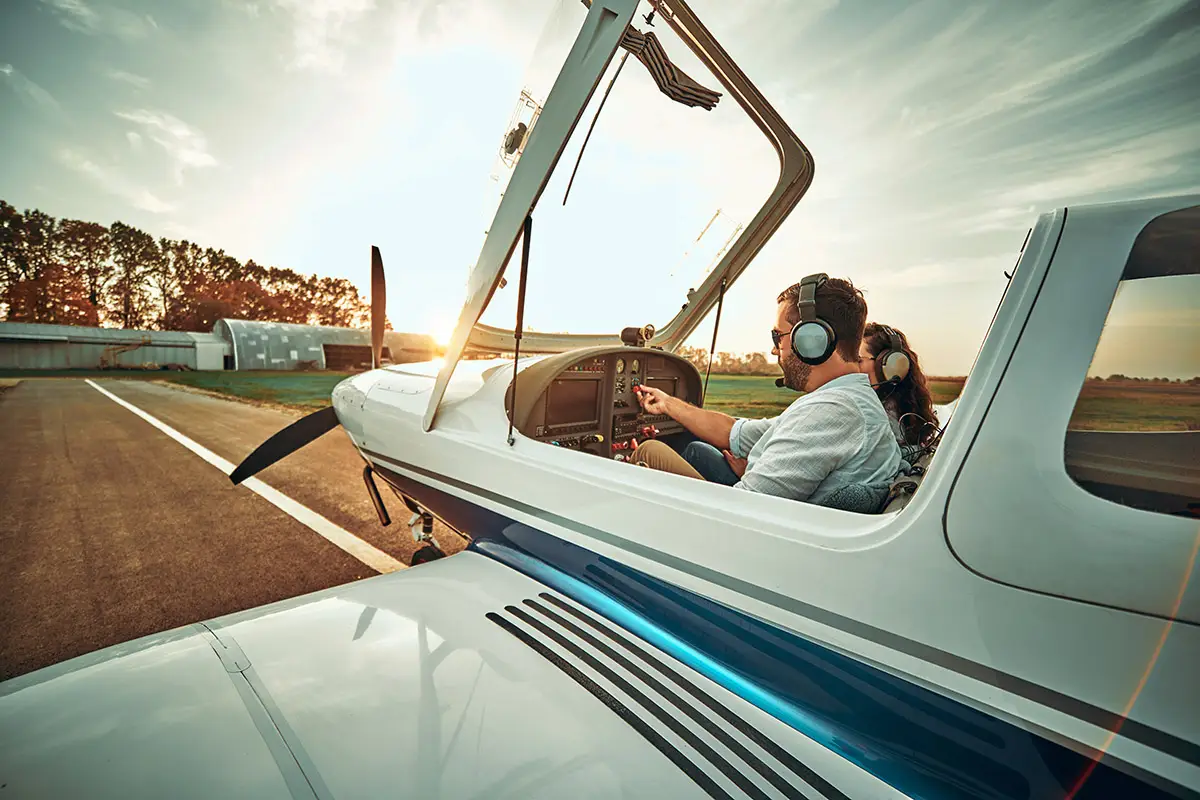
Sign-up for newsletters & special offers!
Get the latest FLYING stories & special offers delivered directly to your inbox

